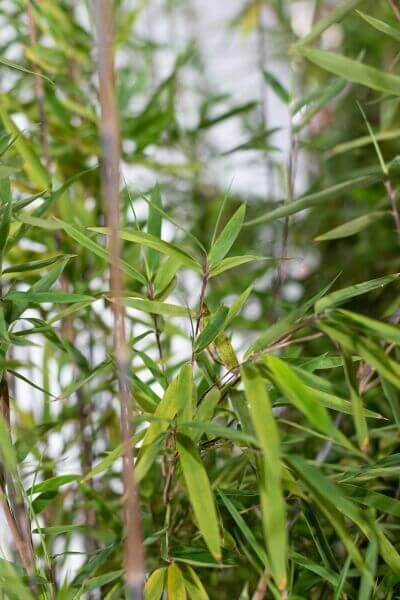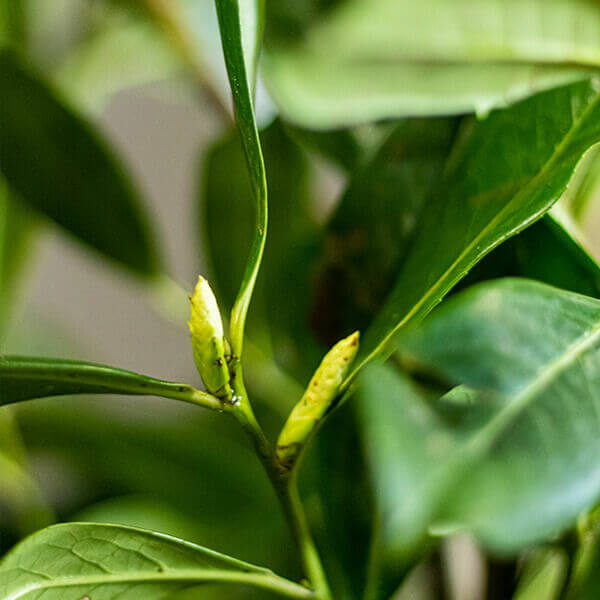Hedge Plants For Rustic Gardens
Hedge Plants For Rustic Gardens
Blog Article
Hedge Plants For Container Gardening
Enhance your garden's appeal with lavish hedge varieties such as Yew (Taxus), Thuja, Laurel, Photinia, and Bamboo, commemorated for their structural integrity and ecological advantages.
Yew and Thuja offer evergreen protection and winter season resilience, while Laurel uses rapid growth and broad, aromatic leaves.
Photinia adds seasonal appeal with its lively red foliage, and Bamboo lends a low-maintenance, peaceful atmosphere.
These hedges improve air quality, decrease sound, and develop tranquil, private spaces.
Correct planting, spacing, and maintenance ensure energetic development and ecological harmony.
Explore how these rich ranges can raise your garden's beauty and well-being.
Secret Takeaways
Change Your Garden With Lush Hedge Varieties
- Select Yew for its thick, evergreen development and unparalleled durability.
- Go with Laurel for its fast growth and broad leaves, guaranteeing quick personal privacy.
- Choose Photinia for its dynamic seasonal foliage, which turns a striking dark red.
- Make use of Bamboo for a low-maintenance, winter-hardy hedge with aesthetic appeal.
- Area plants 2-3 per meter and prune regularly for ideal growth and health.
Popular Hedge Plants
When changing a garden with lavish hedge ranges, it's important to consider popular hedge plants such as Yew, Thuja, Laurel, and Photinia due to their unique characteristics and benefits.
Yew (Taxus) is highly esteemed for its longevity and thick, green development, making it a prime option for sustaining landscapes.
Thuja is kept in mind for its evergreen foliage and robust winter season strength.
Photinia includes seasonal vibrancy with red leaves that darken over time, creating vibrant visual appeal.
Laurel offers rapid development and aromatic, broad leaves, perfect for fast privacy.
Furthermore, Bamboo is an exceptional option for ambiance, offering a low-maintenance, winter-hardy option that boosts the garden's visual with its sophisticated, swaying walking sticks.
These selections cater to a variety of horticultural requirements and choices.
Benefits of Garden Hedges
Garden hedges offer a multitude of advantages, making them an important addition to any landscape. These natural barriers are economical to execute and provide substantial wind security, improving air circulation and adding to noise reduction. The thick foliage of hedges like Thuja and Beech ensures privacy by blocking visibility, developing a remote and tranquil environment.
Hedges likewise play an essential function in microclimate policy, providing a steady environment that fosters plant development and minimizes temperature level fluctuations. Their detailed leaf structures filter pollutants, enhancing air quality and contributing to a much healthier garden ecosystem.
Moreover, hedges master noise decrease, absorbing and deflecting acoustic waves to lower ambient sound levels. This dual functionality of supplying both visual and acoustic personal privacy enhances the general tranquility and aesthetic appeal of any garden.
Planting and Upkeep Tips
For an effective hedge, meticulous preparation of the planting location is crucial. Guarantee the soil has correct pH and drainage to support strong root advancement.
Area the plants appropriately for the selected species. Water the hedge regularly throughout its initial development stage, changing as needed with seasonal modifications.
Implement a methodical bug control and illness prevention strategy, using natural or chemical treatments when essential. Regularly inspect for aphids, mites, and fungal infections.
Apply mulch to retain moisture and suppress weeds. Seasonal pruning promotes dense growth and air flow, vital for plant health.
Following these standards will assist you cultivate a lively, properly maintained hedge that boosts the beauty of your garden.
Spacing and Trimming Standards
Spacing and Cutting Guidelines
Appropriate spacing and trimming are essential for cultivating healthy, visually appealing hedges. Adequate spacing ensures each plant receives sufficient nutrients, light, and airflow.
Follow these guidelines for optimal hedge upkeep:
- Spacing: Position hedge plants 2-3 plants per meter to motivate robust growth.
- Pruning Techniques: Regular pruning is important for maintaining desired hedge height and shape. Trim new development in summertime and cut back older wood during winter.
- Seasonal Care: Adjust trimming approaches and schedules according to seasonal requirements to guarantee plant health.
- Hedge Height: Routinely screen and trim to maintain the wanted hedge height and accomplish uniform visual appeals.
Abiding by these steps will guarantee your hedge prospers, enhancing both the appeal and performance of your garden.
Selecting the Right Hedge
Picking the Right Hedge
Picking the suitable hedge includes evaluating elements such as fully grown height, foliage density, and ecological durability. Successful hedge plant selection needs understanding each species' growth qualities and site-specific flexibility.
For example, Yew (Taxus) uses exceptional longevity and dense development, while Thuja is notable for its winter season durability. Additionally, thinking about maintenance requirements is crucial; fast-growing types like Laurel or Privet demand routine trimming, whereas low-maintenance choices like Bamboo or Ivy might be more effective for those seeking very little upkeep.
Ecological factors such as soil type, light availability, and wetness conditions ought to likewise guide the choice procedure. This cautious technique guarantees the picked hedges will flourish, supplying both aesthetic and functional advantages to the garden landscape.
Delivery and Planting Advice
To guarantee your hedge plants flourish, they must be delivered by specialized couriers and planted immediately upon arrival.
Follow these essential steps for effective planting:
- Soil Preparation: Improve the soil with raw material to improve drain and nutrient material.
- Planting Depth: Create a trench twice the width and equivalent to the depth of the root ball.
- Watering Strategies: Water thoroughly after planting, keeping the soil consistently damp however not filled.
- Mulching: Use a layer of mulch to retain moisture and suppress weeds.
Client Assistance and Service
Offered the crucial role of prompt assistance in horticultural pursuits, our consumer support team is offered six days a week through telephone, e-mail, and social networks to use professional suggestions and swiftly address any concerns. Their commitment to fast action times makes sure customer satisfaction by resolving inquiries associated with plant health, ideal planting approaches, and upkeep schedules.

Response Time
-----------------
Within 24 hours
Within 48 hours
This thorough support system, strengthened by an excellent 9.3/ 10 consumer ranking, highlights our commitment to enhancing the gardening experience for every client.
Often Asked Questions
For How Long Does It Take for Hedge Plants to Establish?
Hedge plants normally need one to 3 years to become completely established, with the precise duration varying by species and growing conditions.
Reliable care throughout this important duration is vital for robust development. Consistent watering, vigilant weed control, and appropriate fertilizer application are pivotal in promoting strong root advancement.
For instance, fast-growing types like Laurel may establish more rapidly, while slower-growing ranges such as Yew may take longer. Persistent maintenance speeds up the facility process, resulting in healthy and dense hedges.
What Are the very best Hedge Plants for Personal Privacy?
The concern of the best hedge plants for privacy includes assessing evergreen and deciduous options.
Evergreen hedges like Thuja, Laurel, and Cypress supply year-round protection, ensuring constant privacy.
In contrast, deciduous hedges such as Beech use seasonal privacy, shedding leaves in cooler months.
Key upkeep ideas for privacy hedges consist of regular cutting, fertilizing in spring, and proper spacing-- normally 2 to 3 plants per meter.
Furthermore, constant watering and persistent weed elimination are essential for promoting healthy, thick growth.
Can Hedge Plants Bring In Wildlife to My Garden?
Yes, hedge plants can attract wildlife to your garden by supplying essential advantages like shelter, food, and nesting sites, consequently improving local biodiversity. Yew, holly, and laurel are exceptional for drawing in birds, while ivy supports a range of pests.
However, it is very important to keep in mind that there are some drawbacks, such as increased maintenance to handle bugs and regular upkeep. Carefully picking and keeping hedge varieties can help balance these advantages and downsides, ultimately promoting a sustainable and lively environment in your garden.
Are There Any Flowering Hedge Plants Available?
Yes, there are flowering hedge plants available that can enhance the charm of your garden.
For instance, Elaeagnus, likewise understood as Olive Willow, produces aromatic white flowers in the fall, including a touch of sophistication.
Photinia, another popular option, showcases lively red leaves that grow into an abundant green, producing a vibrant visual impact throughout the seasons.
To guarantee these plants flourish, it's vital to practice appropriate pruning strategies and seasonal upkeep, such as cutting new growth in the summer and cutting back in the winter.
These procedures will assist preserve the health and aesthetic appeal of your flowering hedges.
How Do I Prevent Bugs in My Hedge Plants?
To avoid insects in hedge plants, employ natural pest control approaches and keep appropriate hedge Browse this site care. Introduce beneficial pests like ladybugs, which victimize hazardous pests, to develop a well balanced ecosystem.
Frequently examine your hedges for signs of infestation and without delay get rid of any affected parts to avoid the spread. Guarantee the health of your hedges by applying well balanced fertilizers and offering adequate water.
Use mulching to retain soil wetness and proper spacing to lower plant stress and promote robust development. These practices collectively assist in lessening pest problems and maintaining a healthy hedge.
Conclusion
In essence, selecting the ideal hedge varieties such as Yew, Thuja, and Laurel can change any garden into a peaceful haven. These plants provide year-round plant, enhance visual appeal, and offer practical advantages like noise decrease and wind protection.
Appropriate planting strategies, accurate spacing, consistent watering, and seasonal cutting are vital for ideal development.
Trustworthy delivery services and professional consumer assistance make sure a smooth experience from purchase to planting, making it easier than ever to elevate your outside space.
Garden hedges use a wide variety of benefits, making them an important addition to any landscape. These natural barriers are affordable to carry out and offer substantial wind security, boosting air circulation and contributing to sound reduction. The dense foliage of hedges like Thuja and Beech makes sure privacy by obstructing presence, creating a secluded and peaceful environment.

Pruning Techniques: Routine pruning is important for keeping desired hedge height and shape. Cut new growth in summer season and cut back older wood during winter.
Report this page